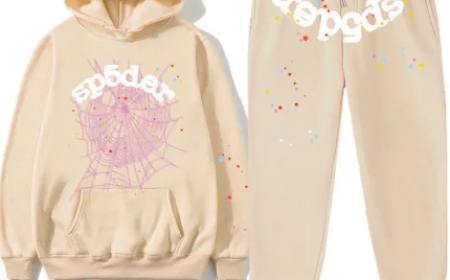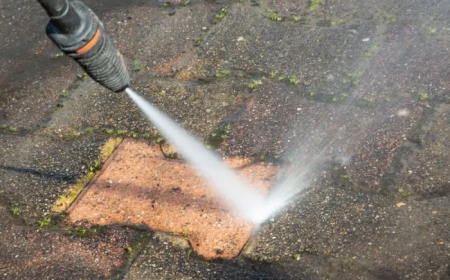Phenoxyethanol vs Parabens: Which Preservative Is Better for Your Skin?
This article dives into a detailed comparison of phenoxyethanol vs parabens, analyzing their safety, effectiveness, compatibility with sensitive skin, and how they influence product formulations. If you’re looking to make informed choices about phenoxyethanol for skin, especially in relation to parabens, this guide is for you.

In the evolving world of skincare, ingredients are under more scrutiny than ever before. As consumers turn labels over to examine whats inside, preservatives like phenoxyethanol and parabens are hot topics. Both are widely used to keep products safe from microbial contaminationbut which one is better for your skin?
This article dives into a detailed comparison of phenoxyethanol vs parabens, analyzing their safety, effectiveness, compatibility with sensitive skin, and how they influence product formulations. If youre looking to make informed choices about phenoxyethanol for skin, especially in relation to parabens, this guide is for you.
Why Preservatives Matter in Skincare
Preservatives are essential for maintaining the safety and shelf life of skincare and cosmetic products, especially those containing water. Without preservatives, products can become breeding grounds for:
-
Bacteria
-
Yeast
-
Mold
-
Contaminants that can cause irritation, breakouts, or infections
Both phenoxyethanol and parabens are added to products to prevent these outcomes, but they work in different waysand are perceived very differently by consumers.
What Is Phenoxyethanol?
Phenoxyethanol is a synthetic preservative derived from phenol and ethylene oxide. It appears as a clear, slightly oily liquid and is effective against a broad spectrum of microorganisms. Used in concentrations of 0.51%, phenoxyethanol is approved by regulatory agencies around the world for use in cosmetics and personal care.
Its popularity has grown in recent years, particularly as brands seek alternatives to parabens that still offer strong antimicrobial protection.
What Are Parabens?
Parabens are a group of synthetic compounds derived from para-hydroxybenzoic acid. Common types include:
-
Methylparaben
-
Propylparaben
-
Butylparaben
-
Ethylparaben
Parabens have been used in cosmetics and pharmaceuticals since the 1920s due to their powerful and cost-effective preservation properties. However, concerns about potential hormone disruption have led to a decline in their use, especially in clean beauty formulations.
Comparing Phenoxyethanol and Parabens
Lets break down the differences between phenoxyethanol vs parabens across key areas that affect your skincare choices.
1. Preservative Strength
-
Phenoxyethanol: Effective against a wide range of bacteria and yeast, but may require combination with other agents to ensure mold protection.
-
Parabens: Extremely broad-spectrum, often work alone to preserve against bacteria, mold, and fungi.
Winner: Parabens (in terms of sheer preservation power)
2. Safety Profile for Skin
-
Phenoxyethanol for skin is generally well-tolerated, even for sensitive users. Its rarely associated with irritation when used in low concentrations.
-
Parabens, while tolerated by many, have been flagged for potential hormonal effects and endocrine disruption in some studies, particularly when used in higher concentrations or combined with other parabens.
Winner: Phenoxyethanol
3. Suitability for Sensitive Skin
-
Phenoxyethanol is often used in hypoallergenic and dermatologist-tested formulas for sensitive skin.
-
Parabens are sometimes avoided in formulations aimed at reactive or allergy-prone skin, due to growing consumer concerneven if scientific data does not strongly link them to irritation.
Winner: Phenoxyethanol
4. Regulatory Approval
-
Phenoxyethanol is approved in the U.S., Europe, Canada, and Japan for use in cosmetics up to 1%.
-
Parabens are banned or restricted in several countries in the European Union due to hormonal concerns, especially in products for babies or near mucous membranes.
Winner: Phenoxyethanol (more universally accepted)
5. Public Perception
-
Phenoxyethanol is perceived as a "safer" alternative and is accepted by many clean beauty brands.
-
Parabens have a reputation problem. Though effective, they are often avoided due to consumer fear and marketing pressures, not always rooted in conclusive science.
Winner: Phenoxyethanol
Phenoxyethanol for Skin: Benefits and Considerations
? Pros
-
Low risk of skin irritation at 1% or lower
-
Effective antimicrobial properties
-
Compatible with other skincare actives
-
Approved by major regulatory bodies
-
Accepted in clean beauty formulations
?? Considerations
-
May cause rare reactions in extremely sensitive skin
-
Often combined with other preservatives for full-spectrum protection
-
Not biodegradable (some environmental concerns)
Parabens for Skin: Benefits and Concerns
? Pros
-
Extremely effective and long-lasting preservation
-
Rarely cause skin irritation at cosmetic levels
-
Inexpensive and stable
?? Concerns
-
Suspected of weak estrogenic activity in lab studies
-
Potential endocrine disruption (mostly at much higher exposure levels than in skincare)
-
Banned in several countries for certain uses
-
Negative public perception impacts brand transparency
Should You Avoid Parabens Completely?
While many experts maintain parabens are safe at the levels used in cosmetics, public perception has driven brands to reformulate. If you're particularly concerned about hormone health, or you're using multiple paraben-containing products, you may choose to avoid them.
However, phenoxyethanol offers a middle grounda synthetic preservative that delivers protection without triggering the same level of controversy.
Phenoxyethanol in Clean Beauty
Many clean skincare brands use phenoxyethanol for skin because:
-
It meets non-paraben criteria
-
It doesn't release formaldehyde
-
It's stable and effective at low doses
-
It's far less irritating than natural preservatives like essential oils
Brands like CeraVe, La Roche-Posay, Paulas Choice, and Bioderma all use phenoxyethanol in sensitive-skin products, which speaks to its safety and utility.
Can You Use Products Containing Both?
Yes. Some products combine phenoxyethanol with small amounts of parabens for enhanced protection. This combination allows formulators to use lower concentrations of each, reducing the risk of irritation or hormonal disruption.
Still, many consumers prefer one or the otheror opt for phenoxyethanol-only preservation to minimize exposure to parabens altogether.
Tips for Choosing the Right Preservative in Your Skincare
-
Read Ingredient Labels
-
Look for "phenoxyethanol" or any of the paraben types.
-
Phenoxyethanol is often listed near the end (used in low amounts).
-
-
Check for Sensitivity
-
Patch test products with phenoxyethanol, especially if youve had reactions to preservatives before.
-
-
Prioritize Your Needs
-
For hormone concerns ? choose phenoxyethanol.
-
For maximum product shelf life ? parabens may offer better longevity.
-
For sensitive skin ? phenoxyethanol is often the gentler option.
-
Final Verdict: Phenoxyethanol or ParabensWhich Is Better?
Choose Phenoxyethanol if you:
-
Have sensitive or allergy-prone skin
-
Prefer clean or non-paraben products
-
Want a low-irritation, effective preservative
Choose Parabens if you:
-
Prioritize long-term preservation
-
Arent concerned about hormone-related risks
-
Use minimal personal care products overall
In the battle of phenoxyethanol vs parabens, the better choice depends on your skin type, ingredient philosophy, and comfort level with current scientific evidence. That said, phenoxyethanol for skin continues to be the preferred preservative in most modern, dermatologist-tested, and consumer-trusted productsstriking a balance between safety and efficacy.


































